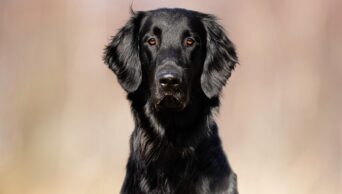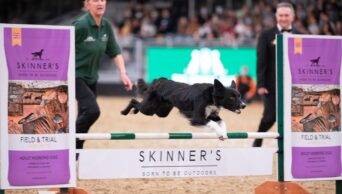Can gundogs do Canicross?
Blog , +2
June 20, 2022
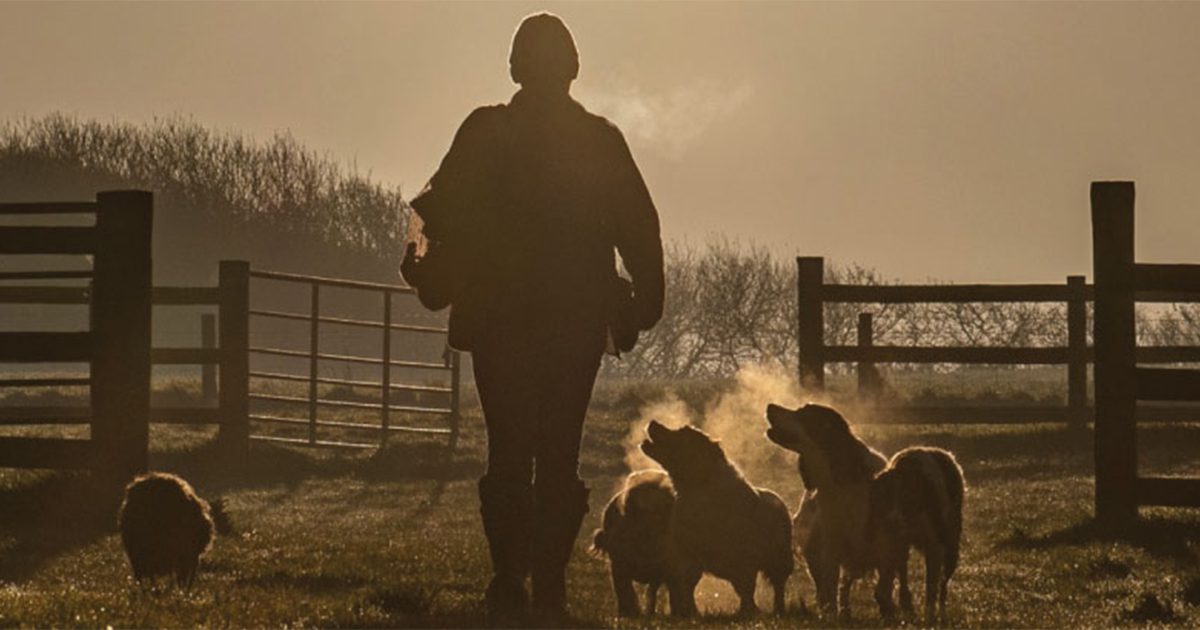
Written by DogFit UK
At DogFit, we are often asked whether any breed of dog can Canicross, or whether some are better at it than others. We reply that, yes, pretty much any dog breed can do Canicross, but there is one particular dog group that we know takes to the sport really well. Gundogs such as Spaniels, Pointers, Viszlas and Labradors make popular family pets due to their loving disposition. However, if they are not exercised enough or regularly challenged mentally, they can quickly grow bored.
Over the years, we have enjoyed introducing many gundogs and their owners to Canicross. Despite originally being bred as shooting field dogs, gundogs are agile and clever enough to switch between the discipline and control needed during a shoot and the quick response times and distance running style required to take part in Canicross.
Michelle Osman is a gundog and professional gundog trainer and handler who has a background in working and training multiple dogs in the shooting field. She has won many Field and Trial Test awards. When she moved from the Cotswolds to Cornwall, shortly after the first pandemic lockdown, she was looking for a change in pace for herself that would still allow her to spend time with her own five spaniels. So, she combined opening a gundog training business with taking up Canicrossing to keep herself fit and her dogs exercised, running along the beautiful coastal trails of North Cornwall.
“When I first arrived in Cornwall, it was obvious to me that the gundog breeds have become really popular for various sports, including Canicross, as well as to keep as pets. There are so many gundogs around where we live. I saw that there was a real need locally there for my type of gundog training. People were taking their gundogs to standard forms of companion training and realising that they needed something extra to keep up with their lively, energetic dispositions. I realised that an awful lot of what I had been doing in the working gundog world to keep the dogs fit and healthy was also very relevant to the pet dog world.
Michelle currently own three spring spaniels and two cocker spaniels. Over the years, she has owned dozens of working and non-working dogs from a wide variety of breeds, from golden retrievers and Labradors to pointers and even beagles. Michelle’s oldest dog is a 13-year-old springer spaniel who is deaf and virtually blind, but still able to come out every day for a beach walk, as long as she knows where she is going. She also has her stud dog – a seven-year-old English springer spaniel, as well as his nephew who is coming up on four years old. Making up the rest of the pack are two working cocker spaniels who are ten and eleven years old.
Training the body and brain
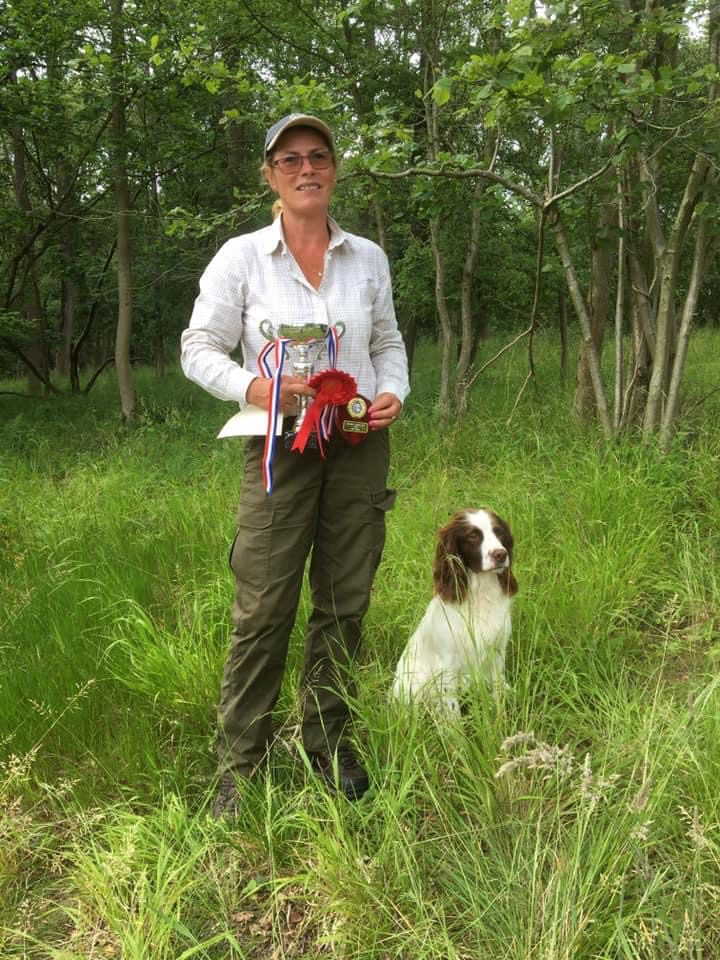
Before getting involved with Canicross, Michelle threw herself fully into her new gundog training business. She is passionate about the need for such lively dogs to experience a different type of training to the standard obedience class. This is due to the fact that gundogs because the dogs are hugely intelligent and active and require a lot of attention to keep them busy and fulfilled.
Michelle explains: “Gundogs have been specially bred by humans to perform different jobs for us. We have taken dogs like short-haired pointers and trained them to range over great distances, teaching them how to hold and point, ready to flush. Then, we’ve bred smaller and smaller spaniels until we have got to today’s cocker spaniels, able to work well with woodcock and to be tenacious about it. Labradors can run for miles and miles when working without seeming to tire. So, as we have bred dogs to do these different things, we need to ensure that we continue to meet their specific genetic needs.
“That is how I approach my training. I look at what we have historically bred the dog to do and then help the owners meet the same needs in their dog in the most convenient way for them. It might be teaching the dog to hunt for food in the garden or to hunt for rabbits. It’s about taking the traits that have been specifically bred into each dog and working with them, not against them.”
Uniforms for all occasions
For gundogs, this type of breeding and training can often revolve around getting the dog to remain calm, come to heel and only move at specific commands. How, then, can such a disciplined dog succeed at Canicrossing, where they must behave very differently to complete the trail safely and at speed? Michelle swears by using different ‘uniforms’ to train the dogs to understand what is going to be required of them at any time.
“People ask me if dogs can recognise different items of clothing that will tell them what is about to happen. I tell them to go and put their running shoes on and see what happens next. Very quickly, the dog will realise what clothes they are wearing and will come running, ready to be taken outside for some exercise. If they put on something else – an outfit that they only wear when they are going out alone – the dog will, most likely, go back into its basket and not try to tag along at all.
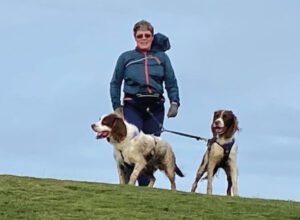
“Extending that idea, if you put your dog into its Canicross harness, that becomes a different uniform to their gundog training slip lead, so they will react and behave very differently once in it. The secret is to have a key demarcation for your dog to tell the difference between your expectations for it to act like a well-behaved gundog and your desire for it to turn into a fast, strong-pulling Canicrossing dog.
Michelle discovered Canicrossing when a lady brought her pointer to one of her gundog training sessions. They talked about the sport and Michelle realised that it could be something she could do with her two younger spaniels who needed more exercise and excitement than her three older dogs. Additionally, her youngest dog has dysplasia in his elbows, meaning that his joints can pop in and out of their joints whenever he tries to turn his shoulders too quickly while on then move. He was experiencing a lot of pain and lameness when allowed to run freely in the woods. By putting him in a harness and Canicrossing line, however, she found that she could teach him how to run straight, pull correctly and avoid any discomfort.
“Since our first Canicross run together last summer, my youngest dog has never had a day’s lameness. He runs at least 5K with me most weeks with no problems at all. Me, though? After taking up running for the first time ever at the grand old age of 57, my body has taken a lot longer than his to adapt to the change of pace! I tend to run him in a pair with his uncle. They really enjoy themselves and have both taken well to Canicrossing. They have even started to track the same steps. We’ve got some great pictures of me running with them, where they both have their front left legs lifted, about to strike back down in perfect unison.
“Another benefit of Canicrossing with trained gundogs is that I can ask them to come to heel very easily when we are running downhill so no-one falls over or gets hurt. People can be quite impressed when they see me bringing them under control like this. Even though my dogs are in their harness, they still recognise the ‘heel’ command because it has been so deeply ingrained in them to do so. If, on the other hand, they are in their slip leads, they wouldn’t dream of pulling in the first place because they have never learnt to pull in that particular uniform.”
Horses for courses
Michelle uses a technique honed on horses to get gundogs used to wearing the Canicross harness. “I start by putting the harness halfway up my arm and holding a treat in my hand. As the dog’s head moves to my hand to take the treat, I move the harness down my arm and over the dog’s neck. I don’t do it up at first. It just lies there. I then get another treat out and take the harness off. I do this lots of times so the dog can get used to the fact that the harness is coming on and off and that something good happens every time. Then, I might clip up just one side of the harness, unclip it and give the treat. Even now, my dogs get a treat whenever the harness goes on or comes off. It’s about making everything a positive experience for them so they have no need to be afraid or refuse to comply.”
Another tip that Michelle has for Canicrossing with trained gundogs is to always make sure they can access what she calls their ‘rational brain’. Out in the shooting field it’s all about self-control, steadiness and keeping the dog calm and ready to move on command. Canicross, on the other hand, is a high-octane, energetic sport that can evoke strong emotions in everyone taking part.
It is very important, according to Michelle, that the dog is still able to listen to instructions and react immediately while running on a Canicross line. By teaching the dog to stay in its rational brain at all times, even when it is pumped up and ready to go, it will be safer for you, there will be fewer injuries for your dog and it can improve overall running times. The dog is concentrating properly, rather than thinking ‘woo-hoo, this is great, let’s go and have a party!’ It’s the same for working gundogs. They must be able to sit calmly off-lead, waiting for their next command, while thousands of birds fly around them, other animals run around in front of them, beaters dash past them and people make lots of noise.
Different types of exercise
Michelle is also keen to point out that dedicated endurance running training is essential for any dog starting out on Canicross, even fit, working gundogs. “When a working gundog is out on a shoot all day it must remain steady and attentive all day. That’s a lot of mental activity, however, the physical requirements can be very different. My working gundogs are sprinters and can work four or five drives on any given shoot day. Each drive will only see them being active for twenty minutes at a time. The rest of their day could be spent sitting on their backsides or waiting in the truck. While they can they sprint well over multiple, short time spans, it can be a different story asking them to run for a lot longer.
“Canicross trails tend to involve more endurance work than the shooting field. We are asking the dogs’ bodies to do a totally different physical activity when Canicrossing and they must work up to the required levels slowly. Whatever discipline the dog has come from, be it gundog, ability dog, pet dog, rescue dog… they must start from the basics and build it up. They could be running on different surfaces too and different types of dog will prefer different textures under foot. For example, my dog with dysplasia – will always get himself up onto a grassy bank rather than staying on a stony track because he prefers running on the softer grass. Then, you have weather conditions and temperatures to think about. It’s all about doing what’s best for the dog and preparing them as best we can for the conditions ahead.”
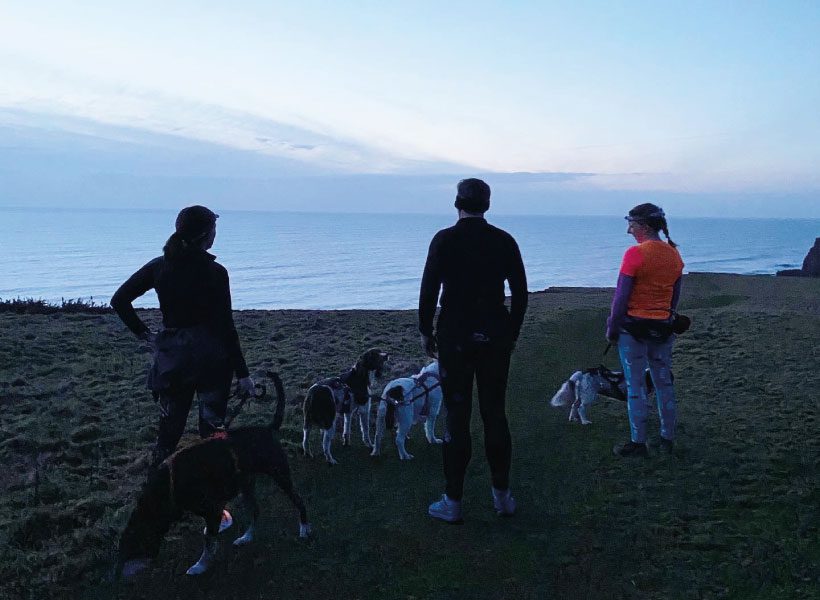
Benefits for all
Michelle is passionate about the varied benefits that Canicrossing has brought to herself and her brood of spaniels. Not just for their physical health, but for their mental wellbeing too. “Canicrossing is the ultimate way to bond with your dog. Gundog training and agility work are both great fun to do together, but it is Canicross that gets you and your dog out on your own, running in the middle of nowhere in beautiful surroundings. My dogs and I the whole way round! They love being with me, doing something they enjoy and they know that it’s pleasing me too. It’s that whole thing of being physically attached to your dog like an umbilical cord. The two of you are working as a team to complete the course and ensure that everyone is running the same way.
“When I run with two dogs, for instance, I must take particular care that I know what they are going to do before they do it. If one or both of them suddenly decided to stop, it would get pretty messy. If they were on a split line and one dog decided to go one side of a tree while the other ran around the other, it would get even messier… You’ve got that important physical connection, but also the emotional attachment that comes with working as a team. Canicross has given me and my dogs a real purpose and series of goals to work towards. Not to mention a wonderful new social circle of like-minded people who love running with their dogs and then going off together for a bite to eat afterwards. That’s all pretty amazing!”
Chasing hats
Michelle recalls the time when her spaniel’s gundog training put her in very good stead during a particularly blustery run along the North Cornwall coast.
“I had a baseball cap on and it suddenly flew off, right down this steep valley. About 150 yards later, it landed at the bottom. The other runners in the group stopped and offered to wait for me while I ran down to get it. I replied that there was no way I was going all the way down there. I unclipped my dog, lined him up and told him to go and get my hat. He ran straight down, picked up the hat, brought it up the hill and sat back down in front of me, calm as you like. I put my hat back on my head, reclipped the dog and off we went again. People stood there with their mouths open!
“There’s a saying: don’t have a dog and bark yourself! Part of my training methods with dogs is to teach them how to pick things up and return them, so it is perfectly normal for them to do things like going and fetching my hat. What made this incident so funny was the look on people’s faces. They thought they were going to get a bit of a break from running while I walked down the hill and back up again, but instead I sent the dog who fetched it for me in no time at all!”
“Just go for it!”
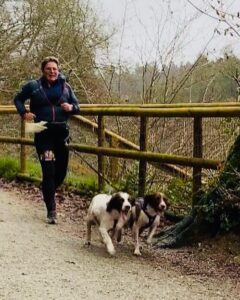
Finally, we asked Michelle what her advice would be to anyone considering taking up Canicrossing with their own gundog. She replied with huge enthusiasm that it would be to: “Just go for it! Start off by finding someone to run with at first who will show you the ropes and help you choose the right kit for your dog. Then get someone to teach you about the various commands and what to do while out on the trail.
“Secondly, learn the Canicross etiquette. If you’re running in areas that attract large numbers of tourists, as we do in Cornwall, you must lead the way when it comes to showing manners and respect. You must be the ones to stop and move to the side to allow others to pass. Twenty dogs and twenty runners can’t just plough through a group of people who have come on a bus trip to Bude for the day. That is really important.
“Don’t ever feel that your gundog can only do gundogs things. Why should they be restricted like that? Humans don’t just do one thing – we have lots of interests and hobbies. Many gundog people already take their dogs running off-lead to prepare them for the shooting season. They using longer distance running as a way to increase their dogs’ fitness levels. It doesn’t take much more to tie the two disciplines together and have a go at Canicross.”
For help and advice for all things Canicross, DogFit are here to give advice on the right kit for you and your dog, as well as finding classes and helpful hints and tips. www.dogfit.co.uk
If you would like to listen to our podcast with Michelle Oseman, you can find this here
https://podcasts.apple.com/gb/podcast/can-gundogs-canicross/
Happy Canicrossing!

